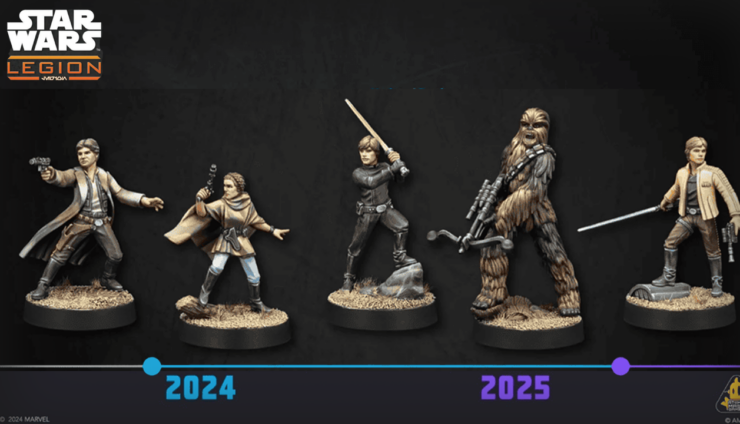Come see the basics on how to play the new Star Wars Legion game using FFG’s quick start demo, and get a look at Darth Vader’s legendary rules.
Once you get your Legion Starter set assembled, painted and based, you are ready to play! Fantasy Flight Games included, in the starter box, a beginning demo game to learn the basics of the Star Wars: Legion game. This is played on a 3′ x 3′ mat, with barricades set up as terrain just like in the quick start rules in the starter set.
Overall the game is broken down into three phases: Command, Action, End. Games are set up with your opponent using condition, deployment, and mission cards.
Command Phase
Order your troops into battle, using the command order cards. There are usually seven commands, however, the demo game only uses four to get started. The two commanders choose a card to put down blind then flip the cards.
Whoever has the lowest pip on the cards gets to activate first. If you tie, you roll off a red dice. Orders are issued to any model in range three, using the rangefinder tool. When an order is given, place an order token next to that unit.
Action Phase
When a unit is activated, grab the movement template that corresponds to the corresponding pips on the card. For example, the Speeders have movement three pips, so you take the three pip template. Stormtroopers are movement two.
When setting up movement, set the template against the base and turn it in the direction you want it to go. For vehicles, you lock the template into the base and move the model. Speeders have a compulsory movement, meaning they have to move their full range each turn. When moving a squadron, the sergeant moves and others in the unit have to be within one movement template of that sergeant. Every unit has two actions. Since Speeders have compulsory move, they still get their two actions, which can allow them to even move THREE TIMES!
To roll dice for attacks, players take the dice from the chosen weapon profile forming the attack pool and roll. Some abilities, like aim, allow rerolls. Cover plays a factor in the game, removing hits. Once that is taken into account, all special rules for weapons are counted in as well, and then the defender then gets to roll a save. Weapons are fired based on ranges, using the rangefinder tool. Melee combat takes place if you are in base to base contact.
Cover counts if the majority of a unit is obstructed behind a barricade, and the sergeant is touching that barricade, then cover is given to the unit in most cases but not conferred to the unit they are firing at.
If the sergeant is not touching that barricade, then cover is conferred to the as the unit is firing through the barricade.
End phase occurs after all activations are completed for the turn. Orders are discarded after use, except for the standing orders card or other specially indicated cards. All tokens are also cleaned up from the table, with order tokens going back into the pool as needed.
Cards
Points are indicated in the upper left corner of the unit card, under the faction symbol. Save and wounds are indicated on the right under the portrait, the save dice by a square color and wound in green. Movement is directly underneath that, indicated by a glowing red pip to show how much movement they have. The center shows special abilities and weapon profile. When the weapon has keywords, it is always explained on the back of each unit card.
Upgrade cards have certain types, indicated by the bottom rail symbol. They also have a cost, shown on the bottom right. Some can be tapped (or exhausted), and cannot be untapped unless you spend an action to do so. Some are one use items. All commanders come with special orders cards, which you can use up to seven in your command deck.
The game is fairly easy to learn and get through. There are lots of ways to have different games, but the demo game in the starter box is a great way to get used to the mechanics. Be sure to press play on the video below to see the entire demo game and more info on how to play!
Models provided by FFG for review and promotion.









